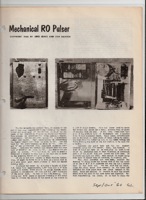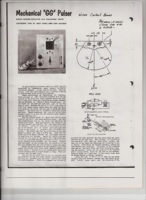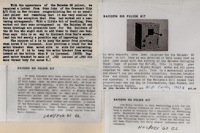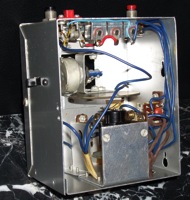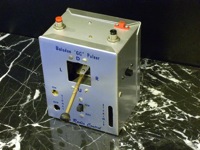Special Exhibit:
Baisden One
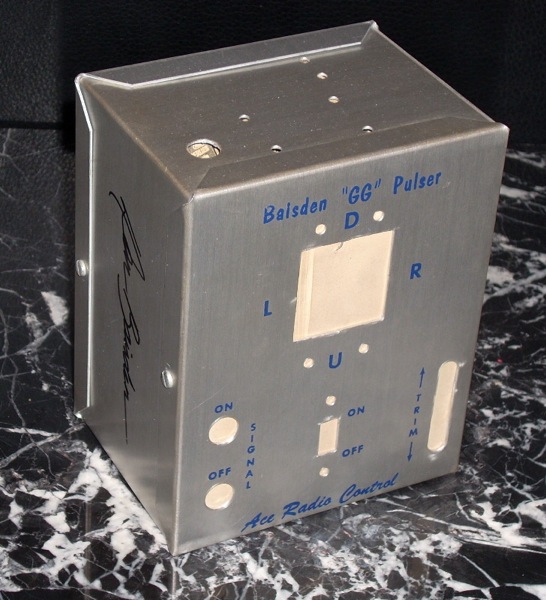
(Click on any of the images on this page to see a larger version)
This was Don Baisden’s personal Baisden GG Pulser. He bought this kit at a hobby shop and kept if for decades, unopened. It was a sentimental memento, and it’s easy to understand why. The Baisden Pulser opened the door to his career in RC design which would ultimately elevate him to the cover of Model Airplane News. Baisden One.
Crash Inspired
Don Baisden was inspired to design his own pulser the day his pulse proportional unit quit in mid-flight. He was a fledgling engineer then, working on the world’s first business jet – the four-engined Lockheed Jetstar. It happened one day when his Smog Hog was turning lazy circles in the air outside the Lockheed plant. It was controlled by a pulse proportional system using a then-standard tube type multivibrator and a surplus telephone relay to key the signal. The relay was the weak link – touchy, sensitive, maintenance intensive.
The Smog Hog had reached a comfortable altitude when suddenly the clicking of the relay in the control box stopped. Baisden says it was like hearing his heart stop. After the initial panic, he managed to plug in a substitute pulser and reduce the severity of the inevitable crash. As he loaded his damaged plane into his car he thought “There must be a better way”.
KISS
The better way he devised was guided by the venerable “KISS” principle of engineering, or “Keep It Simple Stupid”. The Baisden pulser would substitute the simple mechanical action of a Mighty Midget motor and wiper system for the more “sophisticated” electronic approach of other pulsers. How simple was it? So simple that the first Ace Radio Control ad actually said it worked well “in spite of extreme simplicity”.
The control stick connected directly to the pulse rate pot which was attached to a pivoting U-bracket to allow left and right movement as well as up and down. A paddle-shaped printed circuit board was attached to one end of the U-bracket and the Mighty Midget (with its contact wiper) mounted to the bottom of the case. A nylon gear protruding through a slot on the case front provided elevator trim and two push buttons gave solid on or off signal for motor control. No stick centering was provided. The control stick would simply stay wherever you moved it like the stick on a parked, full scale Piper Cub.
Publication and Kits
Baisden submitted a proposed article to Grid Leaks magazine on his GG Pulser and another for his rudder only pulser. Grid Leaks published the rudder only version in its Sept/Oct, 1960 issue and the GG version in the next edition, Nov/Dec 1960. Here’s how these articles looked (first pages only):
There was considerable reader interest in the GG Pulser, and Ace Radio Control (which published Grid Leaks) decided to kit the system. They agreed to pay Baisden a royalty of fifty cents for each unit sold. Here is Ace’s 1961 announcement of the new kit and their advertisement for it from their 1963 catalog:
And this is an example of an assembled Baisden Pulser, inside and out:
The Baisden GG Pulser kits were never really advertised or promoted and the number and quality of competitive alternatives constantly grew. Baisden estimates only about 120 of his pulsers were ever sold. He didn’t get rich off the Baisden GG Pulser, but he got something else. He became a recognized “name” in RC circles. This no doubt helped when he met Controlaire chief Jack Port at the 1964 Toledo trade show.
To learn how that fateful meeting led to great things, including Don’s appearance on the cover of Model Airplane News, see “First Controlaire Proportional”.



